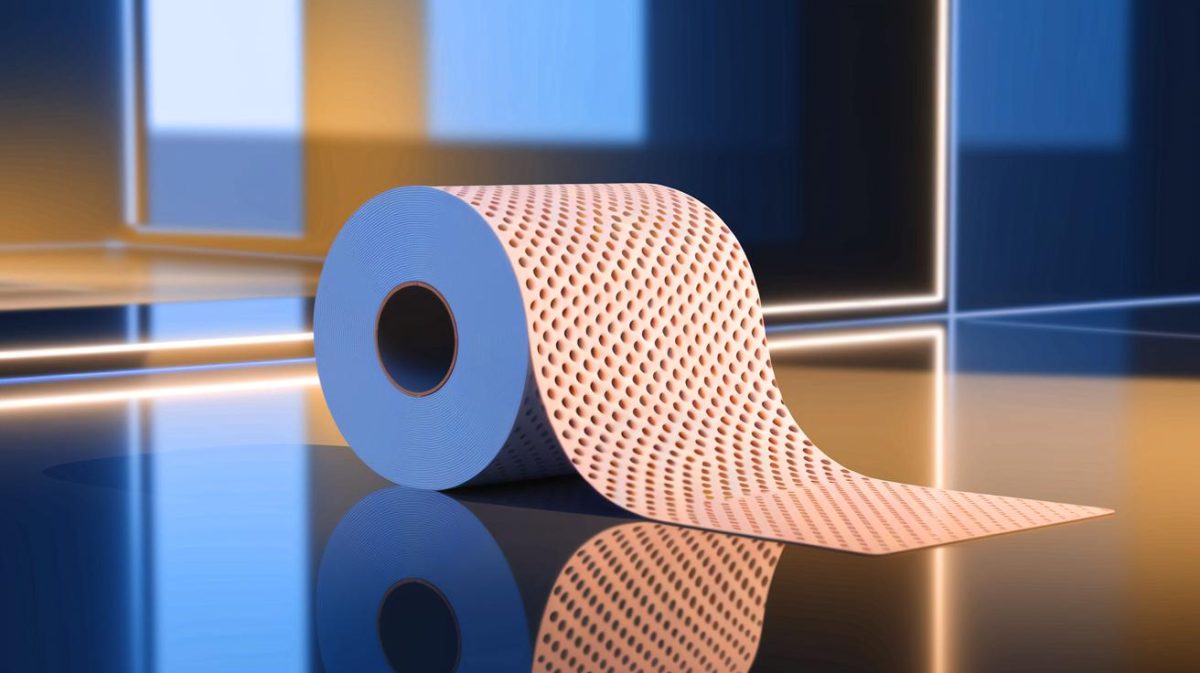| IN A NUTSHELL |
|
In a world where technological advancements often dominate headlines, it’s easy to overlook the subtle revolutions occurring in the most mundane corners of our lives. One such quiet revolution has happened in the realm of toilet paper, a staple in every household. While it may not possess the allure of cutting-edge gadgets, this transformation embodies the relentless pursuit of perfection in everyday items. An unassuming yet brilliant innovation by Charmin has sparked a surge in sales, illustrating that even the smallest details can lead to monumental shifts in consumer satisfaction and market dynamics.
A Silent Revolution in Toilet Paper
For decades, toilet paper has remained one of the most unchanging products in modern households, a routine so natural it’s nearly invisible. However, beneath this apparent stagnation lies a fierce race for technological innovation. Leading companies have dedicated years to refining this essential product through subtle yet sophisticated advancements. According to the Washington Post, the latest and most significant breakthrough comes from Charmin, which, after five years of research, replaced the traditional straight perforation line with a wavy one.
Dubbed Smooth Tear, this innovation addresses a problem as trivial as it is universal: the uneven tearing of sheets. Charmin reports that this seemingly minor change has led to a 5% growth in its business and a “significant level of satisfaction” among users, proving that even the most mundane actions can be optimized down to the minutest detail. This silent revolution in toilet paper design showcases the potential for innovation in places we least expect, reminding us that even the most ordinary objects can undergo extraordinary transformations.
The Engineering of Touch
Far from being whimsical, innovation in the toilet paper domain results from highly complex development processes. The Post reveals that in the laboratories of Procter & Gamble and Kimberly-Clark, engineers and designers have experimented with hundreds of prototypes. They analyzed parameters such as strength, texture, moisture response, and the paper’s behavior depending on its position on the roll, even considering the user’s handedness.
The curves of the new pattern are not decorative but the result of precise calculations concerning force, angle of pull, and adaptation to the industrial process. The technical challenge: create a non-linear tear line that is both effective for the user and robust enough to withstand the high-speed production machinery. Behind this modest product lies a precision mechanism composed of rotating cylinders, synchronized teeth, and cleverly arranged anvils—an engineering feat consumers will never see. This meticulous process highlights the intricate balance between form and function, proving that the art of engineering extends even to the simplest products.
Paper, Culture, and Hygiene
The modern toilet paper is a surprisingly recent invention in the grand timeline of human history. While paper has existed for over two millennia thanks to ancient China, its intimate use only became widespread at the end of the 19th century. Before then, people used whatever was available: leaves, cloths, corn cobs, and even catalogs or old newspapers.
Joseph Gayetty introduced the concept of “medicated” paper in 1857, which was initially mocked due to hygiene-related taboos. The true turning point came in 1890 with the Scott brothers, who popularized the perforated roll, bringing convenience and cleanliness to a daily ritual. Since then, every minor improvement has been part of an ongoing quest for balance between functionality, hygiene, and sensory experience, gradually elevating this trivial object to the level of applied design. The evolution of toilet paper reflects broader cultural shifts, illustrating how societal attitudes towards hygiene and comfort have transformed over time.
Subtle Innovation
Barry Kudrowitz, an expert in product design, calls this kind of progress “incremental innovation”: microscopic refinements that do not alter the essence of the object but optimize its use within a familiar framework for the user. Unlike more disruptive solutions like the bidet (which still faces cultural resistance), the wavy toilet paper integrates seamlessly into existing habits, drawing strength from this very familiarity.
This change requires no relearning but offers a tangible benefit, making it a remarkably effective advancement. In a saturated market where every consumer seems to have their preferred brand, the only way to grow is to convince them that their brand is just a bit better, a bit softer, or a bit smarter. The story of Charmin’s new wavy edge perfectly symbolizes the modern obsession with technical perfection in our daily lives. It’s not about reinventing toilet paper but elevating it to an object worthy of scientific, commercial, and cultural attention.
Sublimating the Practical
Ultimately, the story of Charmin’s new wavy edge exemplifies this modern obsession with technical perfection in our daily lives. It’s not about reinventing toilet paper, but elevating it to an object worthy of scientific, commercial, and cultural attention. It’s the art of revealing complexity in simplicity, applying high-precision technology to an object destined, ironically, to disappear as soon as it’s used. In a world where almost everything essential is already invented, the idea is clear: refine the ordinary, reinvent the minute, and remind us that even the most banal gesture—pulling a suspended roll and watching it detach perfectly—can be the result of years of engineering, design, and effort.
As we marvel at these silent advancements in everyday items, one can’t help but wonder: what other overlooked aspects of our lives might be waiting for their own quiet revolutions?
Did you like it? 4.4/5 (25)










Wow, this article really wiped me out! 🧻😂
Cute comment Mary!!
What an insight as I run some public toilets! 😉😀
Is this wavy perforation available worldwide or just in the US? 🤔
Who knew toilet paper could become a topic of discussion? Incredible!
I’m skeptical. Is this really going to make that big of a difference?
Absolutely positively, take it from someone that tears off lots of toilet paper. It really stinks when it tears sideways and you can’t get a full sheet
Hope this doesn’t mean more trees cut down for this “innovation”.
Finally, something to talk about at dinner parties that’s not politics or weather. 😂
This wavy design must have taken years of research. Kudos to the engineers!
Does this new design affect the roll’s softness or absorbency?
Great! Now my cat can have even more fun unrolling the whole thing. 🐱🧻
I appreciate the thoughtfulness and effort behind this development. Thank you!
Are there any eco-friendly options for this new wavy toilet paper?
Seems like a small thing, but small things can make a big difference!
Just when I thought I had seen it all, wavy toilet paper comes along.
I’m all for innovation, but is this really necessary?
My thought exactly! This seems to be aimed at people with more dollars than sense. I’m sure it’s also more expensive than the regular-tear tp, because they had to re-tool the machinery (and, of course, make new ads & packaging), so those costs have to be recouped from the consumers. No thank you! I’d rather be a peon and spend less money on paper to pee on.
Can’t wait to see how this changes the toilet paper market dynamics.
No pictures?
How can I get a sample of this revolutionary toilet paper?
Looking forward to seeing how this impacts my bathroom routine! 🚽
I never thought I’d be so interested in toilet paper engineering. Fascinating!
Why didn’t anyone think of this sooner? 🤷♂️
Hope this doesn’t mean the price will go up. Toilet paper’s already expensive.
I wonder if other brands will follow Charmin’s lead now.
Will this new design work with all toilet paper holders?
Thanks for highlighting such an intriguing development in our daily lives!
I’m amazed by how much thought goes into something as simple as toilet paper.
Will this innovation help reduce waste or just add to it?
Doesn’t look anything like the opening picture. Dump the AI bot.
Does this mean we can finally say goodbye to those annoying half-tears?
Thank you, Charmin, for making my bathroom experience smoother! 😊
Advertisement is long and boring. Not interested. Google, Hide “news” site from listings.
Cute comment Mary!!
This is a game-changer! Can’t wait to try it out.
How much more expensive is this new design compared to regular toilet paper?
Sounds great!!! And you left what people want to know: where or when this product be available for purchase?????
Nothing beats the bidet.
Nothing beats the bidet
Honestly, this really looks like a nearly direct quote from the PR department for Charmin. A bit interesting but more advertising than journalism.
How about a sample pack or three.?
What a waste of time and money researching and developing this lol. Just use water! Water is the best way to clean yourself after you do your business. Literally just switch to the handheld bidet next to the toilet or the built in water sprinkler inside the toilet. Water is king!
Install a bidet. You can buy them first under $30. But honestly, the should come standard in toilets. People in the US think they’re so weird, but they make for better hygiene. You literally cannot wipe every speck of waste off of you. But you can rinse it off! And water is far more recyclable. The only legitimate problems are regions with water shortages and people with sensory issues. If you REALLY want to reduce plastic, save trees, and help the environment, get a bidet.
I hope I can wipe all this from my memory!
This article could have been written in three paragraphs or less. A lot of saying nothing for so many boring pointless words. For sure paid by the word.